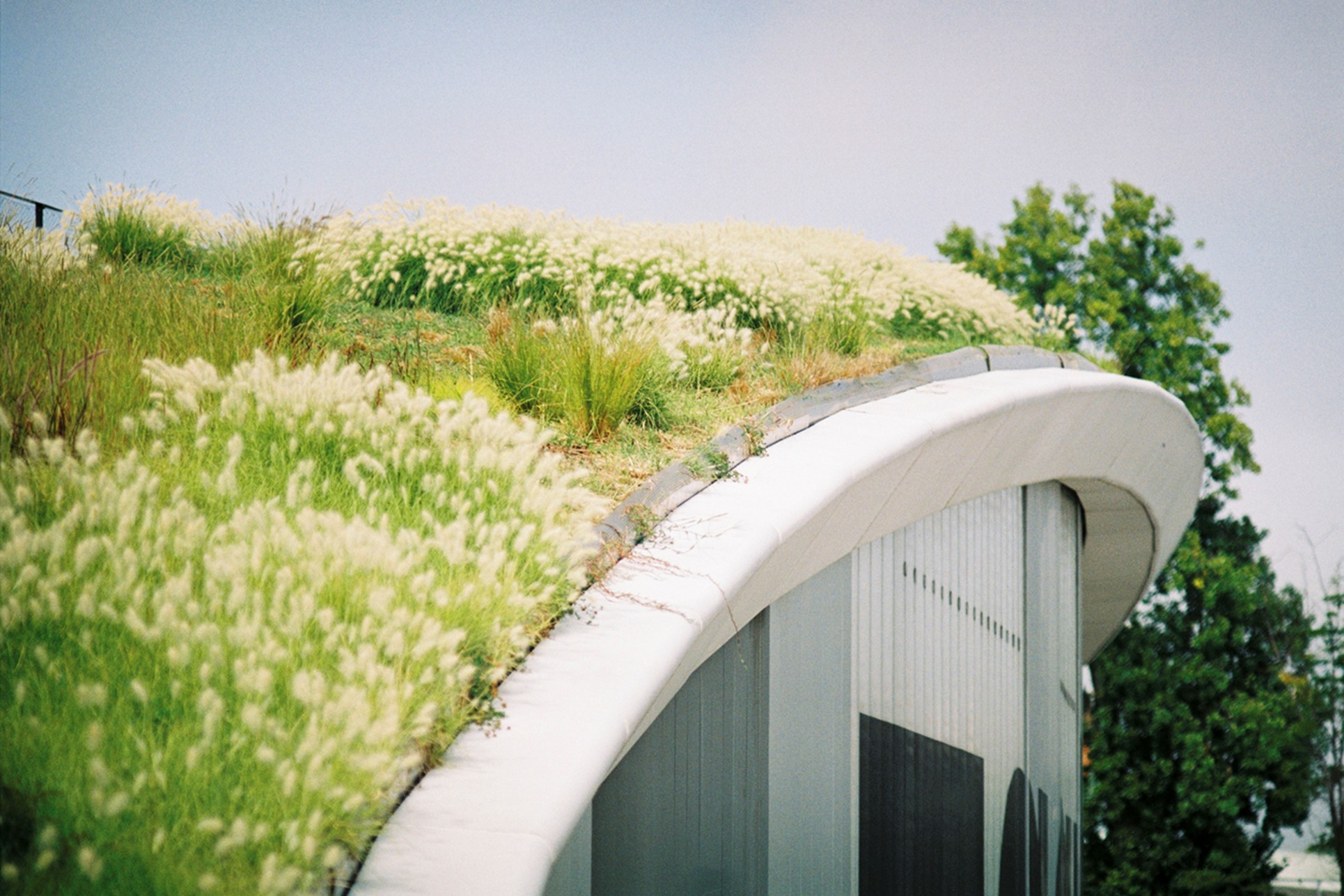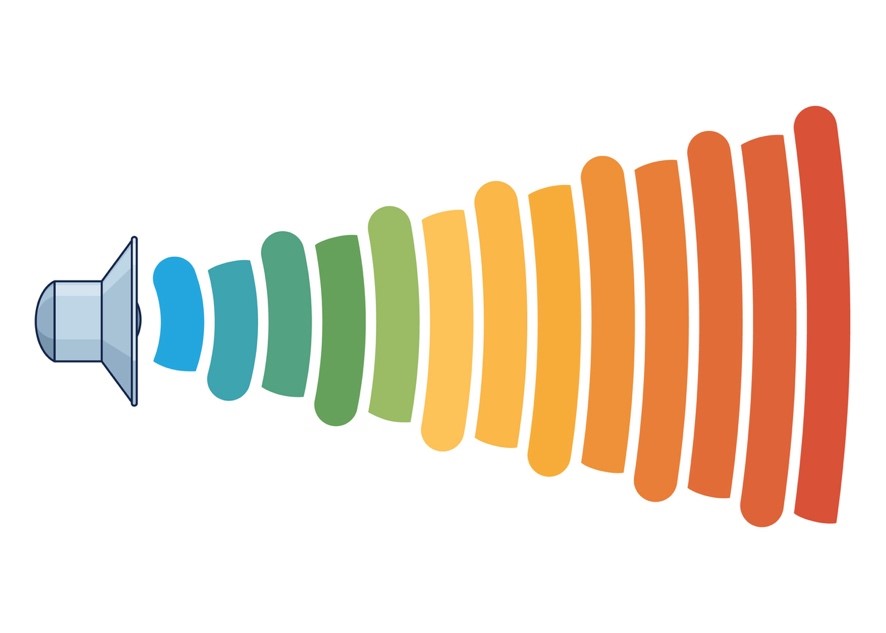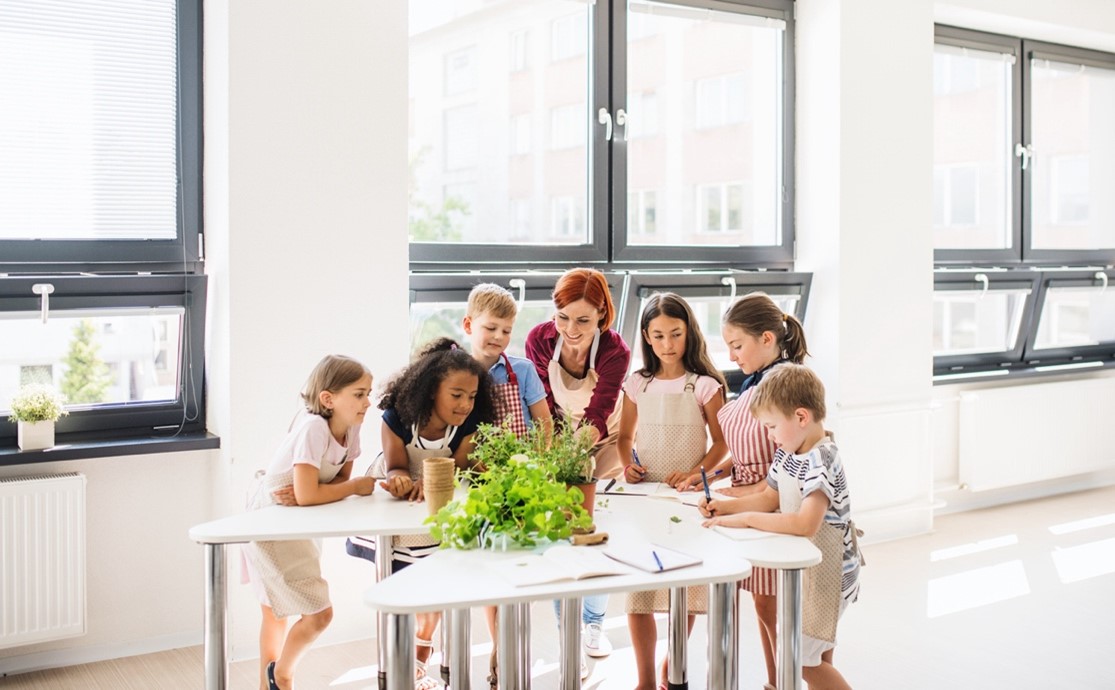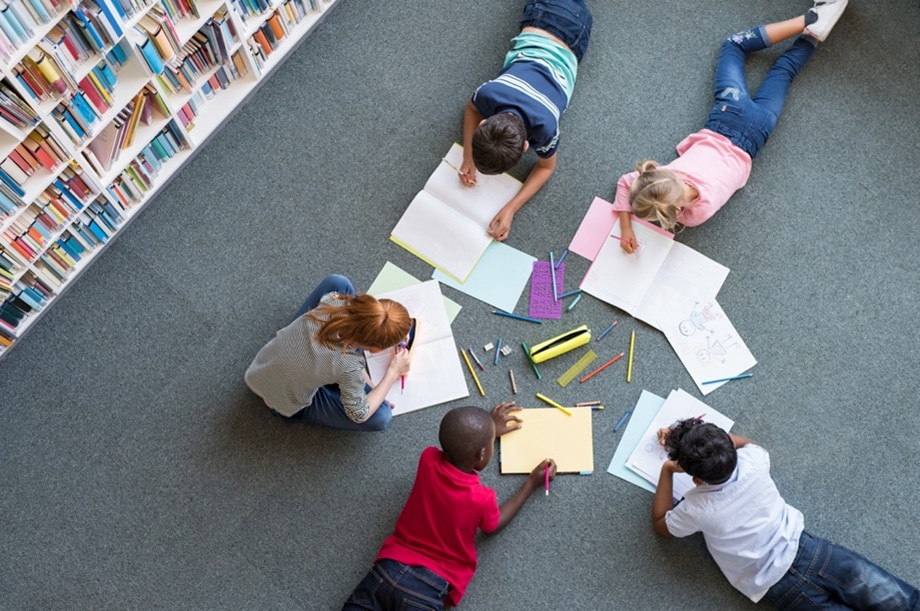Green roofs, defined as roofs that are partially or completely covered with vegetation, provide many benefits to schools. In addition to helping address climate change, they also significantly reduce school energy costs, enhance student mental and physical health, and can be linked to many types of project-based learning activities. There are many government and private sector grant opportunities available to assist school leaders in implementing green roof designs.

As the world battles with climate change and environmental instability, educational institutions are increasingly recognizing their role in supporting sustainability and environmental stewardship. One creative solution that has gained traction in recent years is the incorporation of green roofs when designing school buildings.
For facility planners tasked with planning and renovating educational spaces, green roofs offer a myriad of benefits that go far beyond their visual aesthetic appeal. Let’s explore the compelling reasons why facility planners should consider implementing green roofs in schools, examining their impact on the learning environment, student productivity, and educational opportunities.

The Green Roof Advantage
Green roofs, also known as living roofs or vegetated roofs, are partially or completely covered with vegetation planted over a waterproofing membrane. These eco-friendly installations provide numerous benefits for school buildings and their occupants:
1. Energy Efficiency: Green roofs function as natural insulators for the buildings that they cover, reducing heat gain in summer and heat loss in winter. This can significantly lower a school’s energy consumption and costs associated with heating and cooling.
2. Stormwater Management: By absorbing and filtering rainwater, green roofs help diminish stormwater runoff, lightening the burden on local drainage systems and preventing water pollution.
3. Air Quality Improvement: The plants on green roofs absorb carbon dioxide and release oxygen, helping to purify the air and create a healthier environment for students, staff, and the local community.
4. Noise Reduction: The soil and vegetation on green roofs act as sound insulators, reducing noise pollution from external sources and creating a quieter learning environment. This can be especially helpful for students and staff who are easily distracted.
5. Extended Roof Lifespan: Green roofs help to protect the underlying roofing materials from UV radiation and temperature fluctuations, potentially doubling or tripling the lifespan of the roof.
6. Biodiversity Enhancement: By providing habitats for native and local flora and fauna, green roofs contribute to urban biodiversity and create opportunities for environmental education for students of all ages.
7. Heat Island Effect Mitigation: In urban areas that are overcrowded with minimal natural elements, green roofs help combat the heat island effect by reducing surface temperatures and cooling the surrounding air.
Impact on Student Productivity
Research has shown that green spaces and exposure to nature can have a positive impact on student productivity and academic performance:
1. Improved Concentration: Studies have found that exposure to green spaces can enhance attention and concentration, potentially leading to better academic outcomes.
2. Stress Reduction: Access to green spaces, even visually, has been linked to lower stress levels in students, which can contribute to improved cognitive function and learning capacity.
3. Increased Creativity: Natural environments have been shown to stimulate creativity and problem-solving skills, which are crucial for academic success.
4. Enhanced Physical Activity: Green roofs that are accessible to students can provide opportunities for physical activity during breaks, contributing to overall health and potentially improving academic performance.
5. Better Sleep Quality: Exposure to natural light and green spaces during the day has been associated with improved sleep quality, which is essential for memory consolidation and learning.

Incorporating Green Roofs into Project-Based Learning
Green roofs offer unique opportunities for hands-on, interdisciplinary learning experiences. Facility planners can work with educators to integrate green roof spaces into the curriculum through project-based learning initiatives:
1. Environmental Science Projects: Students can study plant growth, soil composition, and local ecosystems using the green roof as a living laboratory.
2. Data Collection and Analysis: Green roofs can be equipped with sensors to measure temperature, humidity, and water runoff, providing real-world data for math and science classes.
3. Sustainable Design Challenges: Architecture and engineering classes can use the green roof as a case study for sustainable building practices and design their own green roof systems.
4. Urban Agriculture Programs: Edible gardens on green roofs can teach students about food production, nutrition, and sustainable agriculture.
5. Weather Station Integration: A weather station on the green roof can provide data for meteorology studies and climate change discussions.
6. Biodiversity Surveys: Biology classes can conduct regular surveys of plant and animal species on the green roof, tracking changes over time.
7. Energy Efficiency Studies: Students can compare energy usage in buildings with and without green roofs, analyzing the impact on heating and cooling costs.
8. Art and Photography Projects: The green roof can serve as inspiration for visual arts classes, encouraging students to capture the changing seasons and natural beauty.
9. Writing and Literature: The green space can provide a peaceful setting for creative writing classes or outdoor reading sessions.
10. Social Studies and History: Students can research the history of green roofs, their cultural significance, and their role in urban planning and sustainability.
Grants and Resources for Green Roof Implementation
Facility planners looking to incorporate green roofs into school buildings can take advantage of various grants and resources:
1. EPA Environmental Education Grants: The U.S. Environmental Protection Agency offers grants to support environmental education projects, including green infrastructure initiatives in schools.
2. USDA Farm to School Grant Program: While primarily focused on school gardens, this program can potentially support rooftop garden initiatives as part of a broader farm-to-school project.
3. National Environmental Education Foundation Grants: NEEF provides grants for environmental education projects, which could include green roof installations and related educational programs.
4. State-specific Green Infrastructure Grants: Many states offer grants for green infrastructure projects, including green roofs. Facility planners should research opportunities specific to their location.
5. Local Utility Company Incentives: Some utility companies offer incentives or rebates for energy-efficient building improvements, which may include green roof installations.
6. Private Foundations: Organizations like the Kresge Foundation and the Pisces Foundation offer grants for environmental initiatives in education.
7. Green Roof Professional (GRP) Certification: The Green Roofs for Healthy Cities organization offers training and certification for professionals involved in green roof design and implementation.
8. LEED Certification Resources: The U.S. Green Building Council provides resources and guidelines for incorporating green roofs as part of LEED certification for schools.
9. Green Schools Alliance: This organization offers resources, networking opportunities, and support for schools implementing sustainable practices, including green roofs.
10. American Society of Landscape Architects (ASLA): ASLA provides educational resources and case studies on green roof design and implementation in educational settings.
Implementation Considerations
When planning to incorporate a green roof in a school building, facility planners should consider the following:
1. Structural Assessment: Ensure the existing roof structure can support the additional weight of a green roof system.
2. Waterproofing and Drainage: Implement proper waterproofing measures and efficient drainage systems to prevent water damage.
3. Plant Selection: Choose plants that are native to the local area and climate. This will help to plan an area that requires minimal maintenance.
4. Accessibility: Determine whether the green roof will be accessible to students and staff, and plan accordingly for safety measures. Ensure that the area is designed for inclusivity of those with disabilities.
5. Maintenance Plan: Develop a comprehensive maintenance plan, including irrigation, weeding, and regular inspections.
6. Integration with Curriculum: Work closely with educators to ensure the green roof design aligns with educational objectives and can be easily integrated into various subjects across grade levels.
7. Community Engagement: Involve students, parents, and the local community in the planning and implementation process to build support and ensure long-term success.
Incorporating green roofs in schools offers a wealth of benefits for students, staff, and the environment. From improved energy efficiency and air quality to enhanced learning experiences and opportunities for project-based education, green roofs represent a valuable investment in the future of education and sustainability. By leveraging available government, commercial, and private grants and rebates, facility planners can transform school buildings into living laboratories that nurture environmental stewardship, promote academic excellence, and prepare students for the challenges of an evolving and energy hungry world.
As we continue to seek innovative solutions to environmental and educational challenges, green roofs stand out as a powerful tool for creating healthier, more sustainable, and more inspiring learning environments for generations to come.
Sources
- Saenen, N.D., Nawrot, T.S., Hautekiet, P. et al. Residential green space improves cognitive performances in primary schoolchildren independent of traffic-related air pollution exposure. Environ Health 22, 33 (2023).
- Vella-Brodrick, D.A., Gilowska, K. Effects of Nature (Greenspace) on Cognitive Functioning in School Children and Adolescents: a Systematic Review. Educ Psychol Rev 34, 1217–1254 (2022).
- Yeh C-W, Hung S-H and Chang C-Y (2022) The influence of natural environments on creativity. Front. Psychiatry 13:895213.
- Zhong, C., Yin, X., Fallah-Shorshani, M. et al. (2023) Disparities in greenspace associated with sleep duration among adolescent children in Southern California. Environmental Epidemiology. 7:e264









